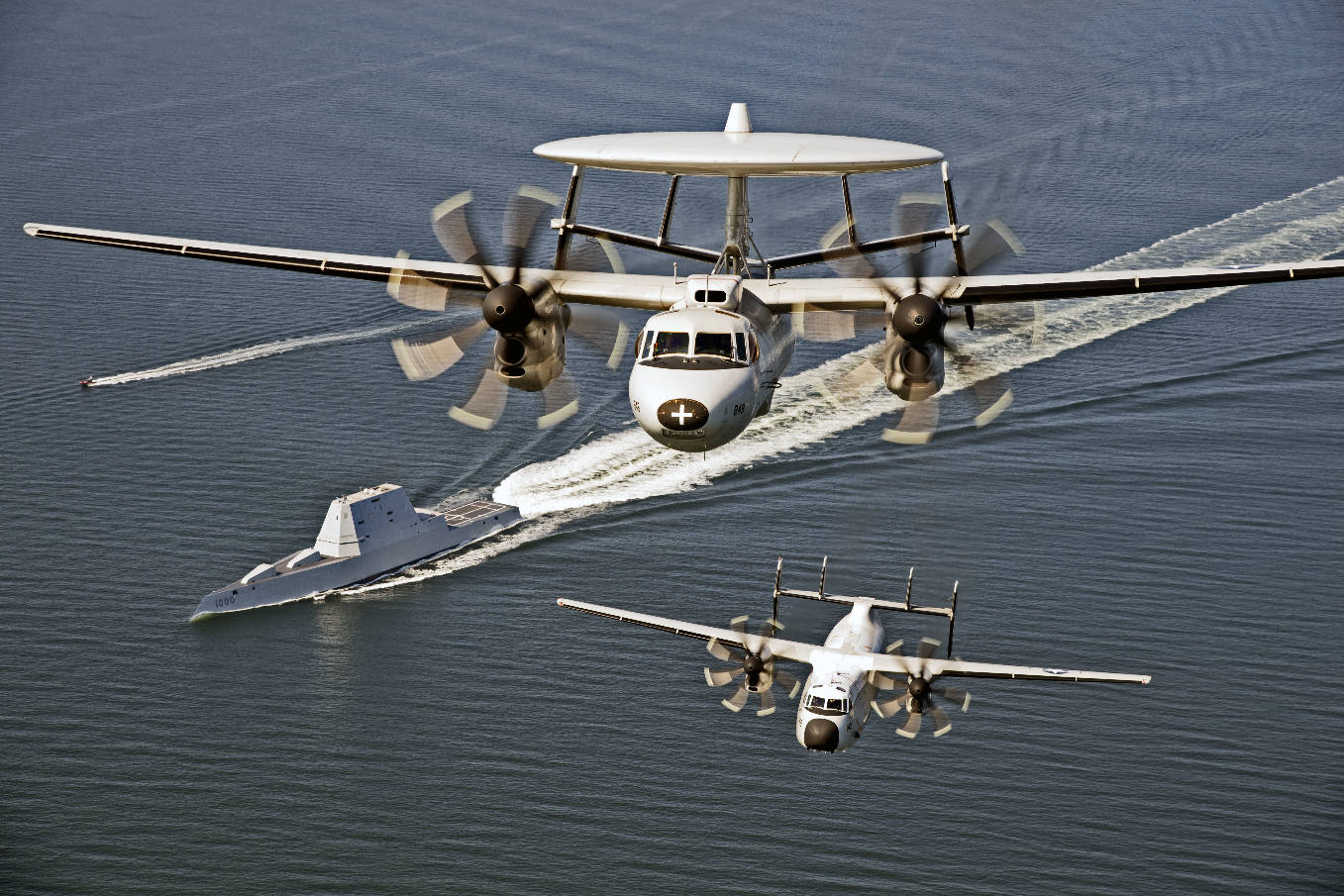The U.S. Navy has announced that its newest airborne early warning and control aircraft, the E-2D Advanced Hawkeye, will join the Forward Deployed Naval Forces (FDNF) as part of Carrier Air Wing (CVW) 5 in Japan in February 2017.
The Navy says the move – coupled with the phased relocation of CVW-5's fixed-wing aircraft from Naval Air Facility (NAF) Atsugi to Marine Corps Air Station (MCAS) Iwakuni – is part of the rebalance to the Asia-Pacific, a plan to put the most advanced and capable units forward in order to support the U.S. commitment to the security and stability of the region.
The E-2D is the latest variant of the E-2 Hawkeye, which employs long-range radar and electronic communications capabilities to oversee the battlespace and detect threats beyond the sensor range of other friendly units.
The Advanced Hawkeye collects and distributes the tactical picture to command centres and other assets through onboard data processing subsystems. New features of the E-2D include the A/N-APY9 radar which is capable of both mechanical and electronic sweeping, an “all glass” tactical cockpit, an upgraded mission computer, upgraded data link capabilities and more powerful turboprop engines.
Carrier Airborne Early Warning Squadron (VAW) 125, which flies the E-2D, will forward deploy to MCAS Iwakuni, and replace Airborne Early Warning Squadron (VAW) 115, which flies the older E-2C. VAW-125, coming from Naval Station Norfolk, Va., is the first VAW squadron to transition to the Advanced Hawkeye.
The E-2D made its first operational appearance aboard the east coast-assigned aircraft carrier USS Theodore Roosevelt (CVN 71) with the "Tiger Tails" of VAW 125 in March 2015.

